KTM Two-Strokes: Engine Development
The key man behind KTM’s title-winning two- and four-stroke engines, Michael Viertlmayr, offers a candid insight into the enormously challenging task of introducing fuel injection to the brand’s two-stroke enduro models.

For 10 years, Michael Viertlmayr was the Project Leader for KTM’s 450/500cc engine family, and is now in charge of the brand’s entire motocross and off-road engine development program. He heads up passionate team of engine designers whose engines have notched up several world titles – in enduro and motocross – in the past decade. But Viertlmayr and his team had their work cut out for them in developing a fuel-injected two-stroke engine that met KTM’s primary design objectives: to keep the TPI bikes’ power characteristics, feel and exhaust note as close as possible to their carbureted forebears.
Here is Viertlmayr’s fascinating insight into what he says was KTM’s most challenging off-road engine project to date…
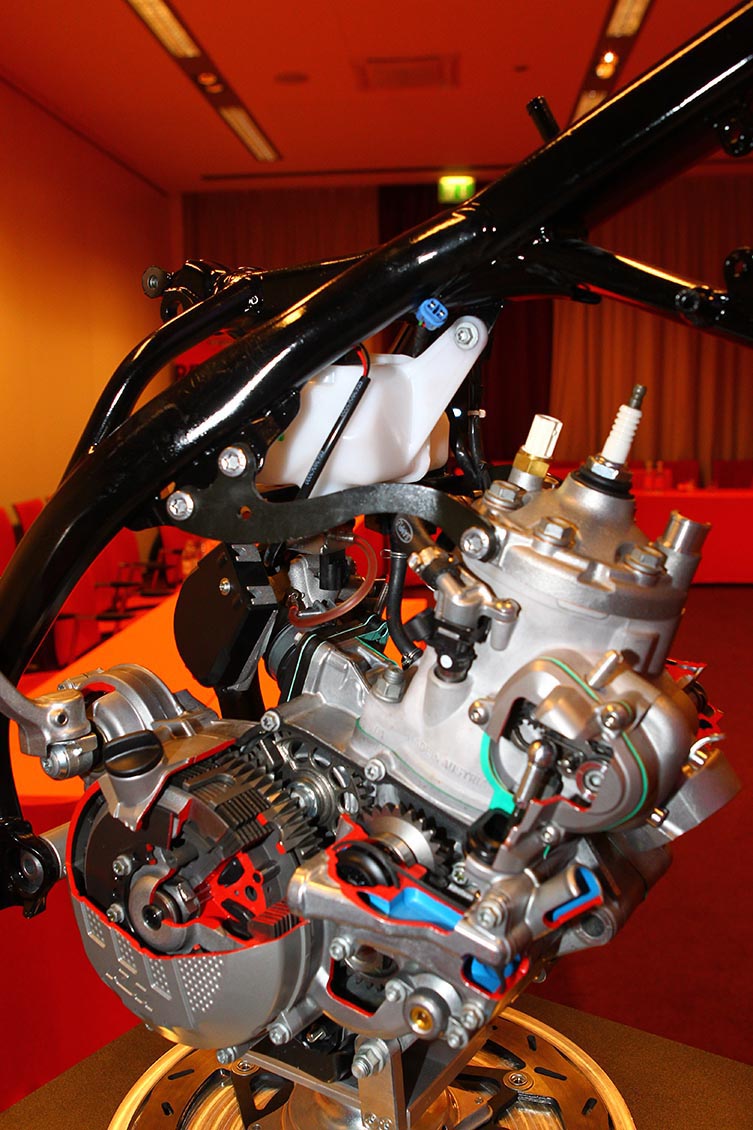
Was the new-generation two-stroke engine introduced in 2017 always destined to use fuel injection?
MV: Yes, the new counter-balancer engine was always designed with fuel injection in mind. The base concept of the previous two-stroke engine was from the early 1990s, and that had been refined about as much as was possible in the 25 years since. So it was important that we build a completely new engine. Our primary goal with the 2017 engine was to reduce vibration because it was affecting the performance and reliability of some parts – the shock absorber, in particular. So we figured out how to configure the engine to introduce the electric starter in a proper way – into the underside of the engine cases, as it should be – and to incorporate the balancer shaft in a way that didn’t require any change to the shape of the cases and compromise how compact the engine package otherwise was. At the launch for the 2017 250EXC and 300EXC, many journalists used the word ‘refined’ when they gave us feedback about the bikes’ engines, and that’s a term not often used for two-strokes.
Is it fair to say that the evolution of four-stroke engines has plateaued relative to where two-strokes are now at with the introduction of fuel injection?
What I will say is that the increasingly stringent emissions regulations gave us little choice but to apply fuel injection technology to our two-strokes. That development process has highlighted the fact we can improve the rideability of our two-strokes significantly because we can map everything. We can adjust the fuel load exactly how we want to for every rpm and every load area. And for the customer, it’s convenient because it removes the need to re-jet the bike for different altitude, humidity, temperature, terrain, etcetera.
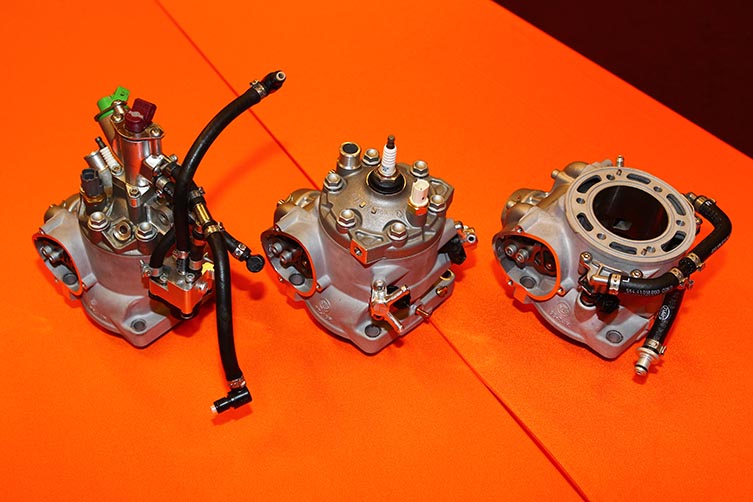
You’ve been upfront about how challenging it was for your team to develop the TPI system. Can you give us a few examples of those challenges.
Initially, back in about 2004, we began working with an Australian company called Orbital, who were very experienced with air-assisted direct-injection for two-strokes, and they’d adapted the technology pretty well to outboard, scooter and personal watercraft engines. They had not been involved with two-stroke motorcycles, but we thought that would be a good starting point for us. With this system, the air and fuel was mixed in a pre-chamber and then, under high pressure, injected into the combustion chamber directly. The huge disadvantage of this system is that it needed a small air compressor integrated into the engine and a very high fuel pressure of 12 Bar. That created problems for the fuel pumps, and challenges in finding the energy requirements to create this high pressure. Overall, the Orbital system is very good for achieving lower emission levels, but it became apparent that it was just was just too complex for a lightweight, simple off-road motorcycle. Then from 2012 to 2014, our Direct-Injection system looked very promising with two injectors positioned laterally and injecting directly into the combustion chamber. It was simple and lightweight and robust, and used the same low number of sensors we use on our four-strokes. But we had some issues with the cooling of the piston, which was prone to seizing because its underside didn’t benefit from the cooling effect of the fuel charge. In time, we came to understand that the fuel/air mixture preparation was not good enough to obtain the rideability we were after. So, after focusing on the system’s software for a long time – and by that, I mean the Engine Management System, or EMS – we were forced to step back and make hardware changes. One of the options we had was changing the position of the injectors, and the transfer port option proved a much better solution than the others.
Your team refer to the TPI discovery as a breakthrough. But that also came with its challenges, right?
Yes, the size and angle of the injectors themselves were critical. Also, the fuel/air mixture preparation and the sophistication required from the EMS were two of the major challenges we faced with the TPI system. Our simulations of the combustion chamber demonstrated that injecting into the transfer ports gave the fuel more time – and we’re talking milliseconds here – to mix with the air, which created a more efficient burn and more power. That was the magic off the TPI system; the final piece of the puzzle that gave us the rideability we were after.

But that only came after you’d sufficiently developed the EMS?
That’s right. For example, the EMS needed to detect the condition of the cylinder for each and every charge and combustion cycle so the exhaust pressure wave did not cause extended flameouts. A carburettor is a self-adjusting system. I know that sounds a bit ironic, but it’s just physics – if there is more airflow through a carb, it automatically richens up the fuel in the volume of air that goes through the carb. A fuel injection system, on the other hand, has to ‘know’ that there is a change to the flow though the system. It has to be ‘told’. Otherwise, it would inject the wrong amount of fuel. So we worked with Synerject to develop the required level of sophistication from the EMS unit. We needed the correct EMS and gas dynamics of the exhaust to be able to detect flameouts and then react to them with adapted injection signals.
Were there also challenges associated with injecting oil into the engine?
No, that was relatively simple. We found the right oil pump and only had to make some small modifications to the oil injection system to make sure it worked well. The oil feed hose leads from the 700ml oil tank into the small membrane pump, which is controlled by an extra map in the ECU (the Engine Control Unit, or black box heart of the EMS). It precisely meters the oil by adjusting the frequency of the pump’s strokes, and the oil travels directly into the throttle body via a one-way valve, where it is then atomised by the reed-valves, or what we call the membrane plates.
And by separating the way fuel and oil are ingested by the engine, there no longer needs to be a compromise in the fuel-to-oil ratio to ensure engine parts are adequately lubricated.
Exactly. For the carb-fed bikes, we needed to set the fuel-to-oil ratio for the worst-case scenario – which is deep sand, high engine load, high rpm. Now, instead of the 50 or 60:1 compromise ratio we recommend for the carb bikes, the TPI bikes run at anywhere between 70 and 150:1, depending on a number of engine parameters (rpm, throttle position, load, etc). In other words, the oil is only supplied when the engine really needs it, not all the time. That drastically reduces the oil consumption. And no special oil is required for the TPI machines. We recommend consumers use the same Motorex Cross Power 2T product.
You speak a lot about these TPI bikes’ “rideability”. What exactly do you mean by that?
First of all, they start and idle much better than the carb engines. The standout thing our testing proved was that you can drop the rpm much lower than you can on a carb bike and still not stall the engine. You can climb up steep trails at less than 1000rpm without a problem. With a carb bike, if you were to open the throttle in this situation, the bike would immediately stall. So by saying “rideability”, we are saying these things plus the fact the engines are more responsive to throttle inputs. There’s no lag and yet the power is not overly aggressive in the way it comes on, especially at low revs. Then you have other benefits with the TPI technology, such as no smoke, not having to rev the bike on downhills to clear it out, and much, much lower fuel and oil consumption. That means a much bigger range for each tank of fuel, which trailriders will appreciate.
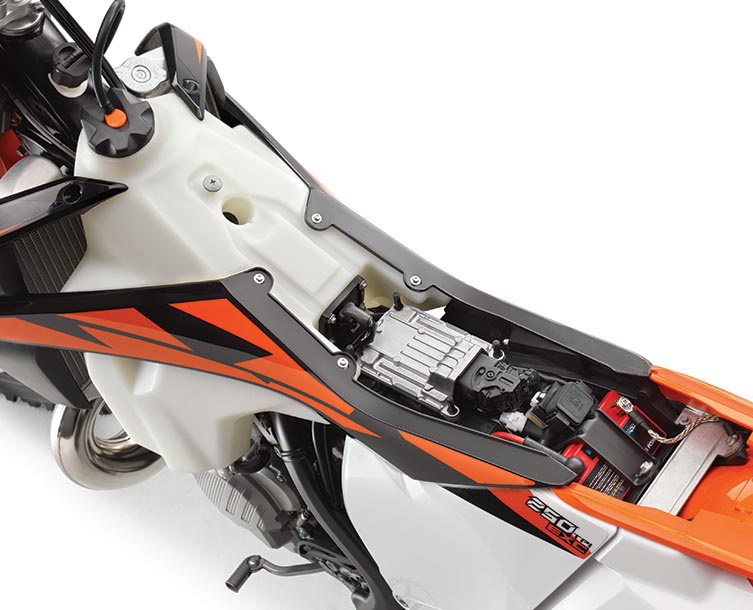
How would you respond to people who suggest that the TPI bikes will be less reliable because they are a more complex system?
The system is more complex and involves more parts. There’s a fuel pump, oil pump, injectors and sensors that are not required on carburetted models. But I would also make the point that we’ve tested the system extensively and found no issues, and that many of the new hardware parts are the same or similar to those that have proven their reliability in our four-stroke models. Also, the reduced vibration levels our two-stroke engines now have – thanks to the fitment of the counter-balancer shaft from the 2017 models onward – means that there is little additional stress on those parts relative to the four-strokes. Our recommended maintenance schedules are the same with TPI and carb models.
But you are adding some weight to the TPI bikes with these additional components. Which is not something KTM’s design team is known for saying in recent years.
It’s true. We have been accused for many years of being obsessed with finding ways to make our bikes lighter. Yes, the components introduced for the TPI system (the oil tank, the oil filler tube and cap, the injectors, the modified air boot and the sensors) adds about 2.5kg to the bikes. But I would point out that, with the TPI bikes’ improved fuel consumption, you could start your ride with a lot less fuel, or not have a bottle of oil in your backpack. So you could argue that that offsets the weight gain.
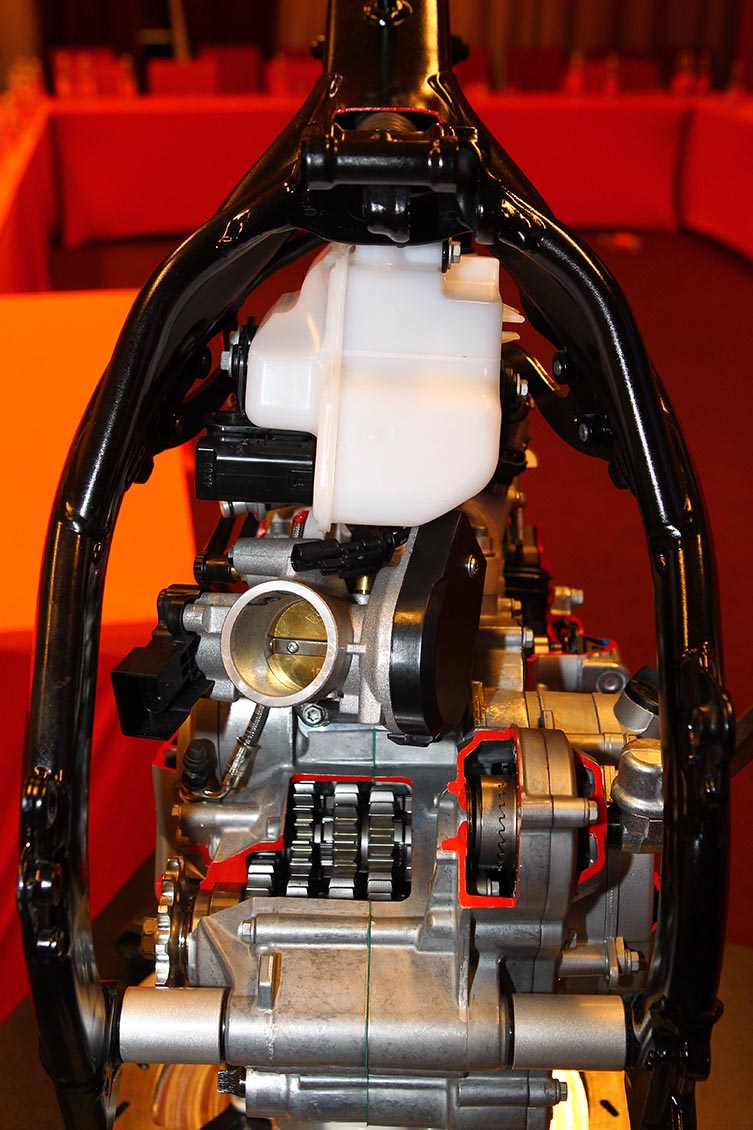
Did the stator also have to be modified for the TPI models?
Yes, it did. Basically, we took the electrical generator rotor off our EXC-F models and added a gear on the outside for the electric starter, and then modified the incremental ring for the new EMS’s engine speed sensor. It was a pretty simple process because we had a proven generator from our four-strokes.
Are the sensors used by the TPI models also off the four-strokes?
Yes, we use the three of the five sensors from the four-strokes, plus a rollover sensor, which stalls the bike off after 5-10 seconds if the bike has crashed and remains laying on the ground.
How satisfying was it for you and the engine development team to finally get these TPI bikes into production?
To be honest, we were pretty nervous in the lead-up to the international media launch in Austria 12 months ago. But by lunchtime on the first day there at Erzberg, when all the journalists from around the world came back from their ride with smiles on their faces, we were very relieved and very gratified that all our hard work had seemed to pay off. It was an amazing feeling really, and marked a very important milestone in our development history that we will look back on fondly.

Because it takes a large investment in developing this fuel injection system for two-strokes, I can imagine it’ll pose an even bigger challenge for other manufacturers.
I can imagine it will, mainly because of the level of sophistication it requires for the system’s hardware and software. And it will not be made any easier by the fact that KTM has applied for a worldwide patent on the TPI technology – on the materials used, the injector position and a few other elements.
Thanks for your time, Michael. Oh, by the way, when is KTM’s 500cc two-stroke due?
Haha [laughs]. I know that KTM Australia’s Jeff Leisk seems to bring this idea up with us more and more these days, though it’s generally after we drink a few beers together. Let’s just say we’ll consider it. Especially if you get the next beer. Your shout, right?
MORE ON KTM’S TPI TWO-STROKES

KTM’S TWO-STROKE EFI: HOW IT EVOLVED
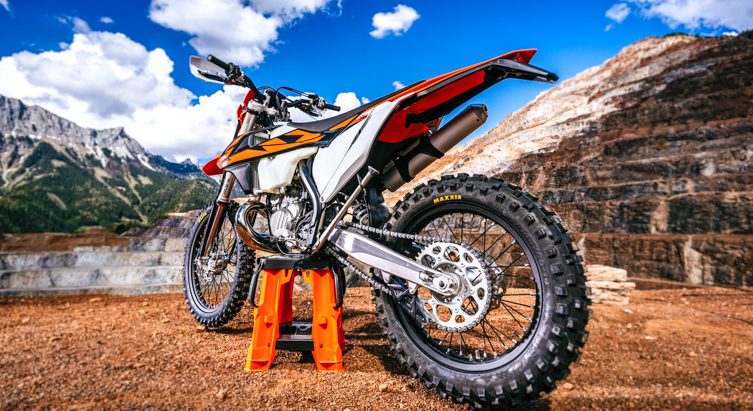
KTM’S TPI 2TS: BEHIND ITS DESIGN
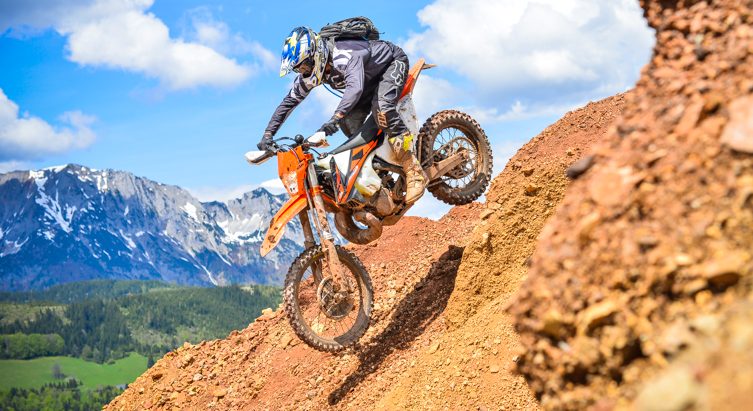
🎥 TESTED: 2018 KTM EXC TPI LAUNCH
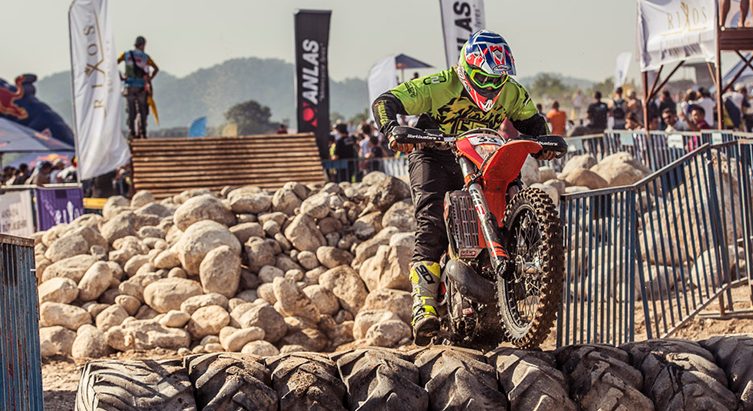
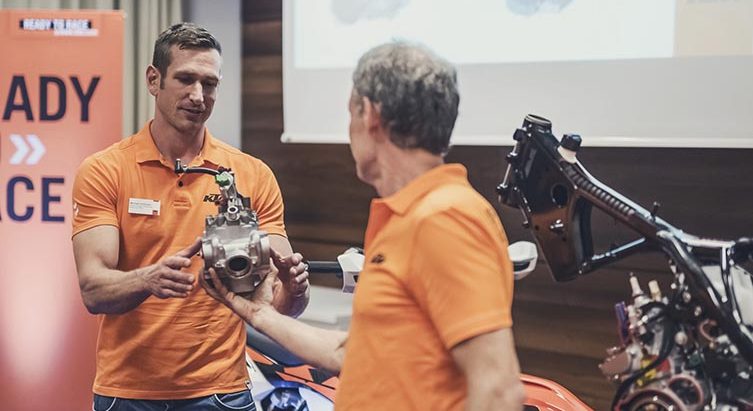
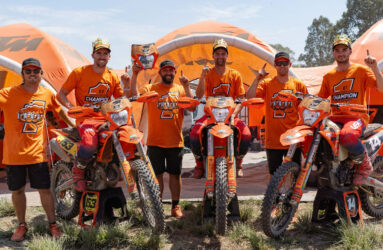

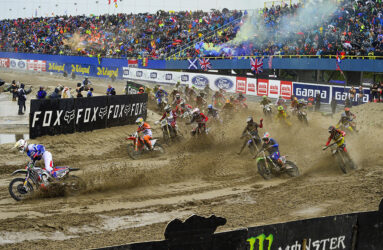





Be the first to comment...